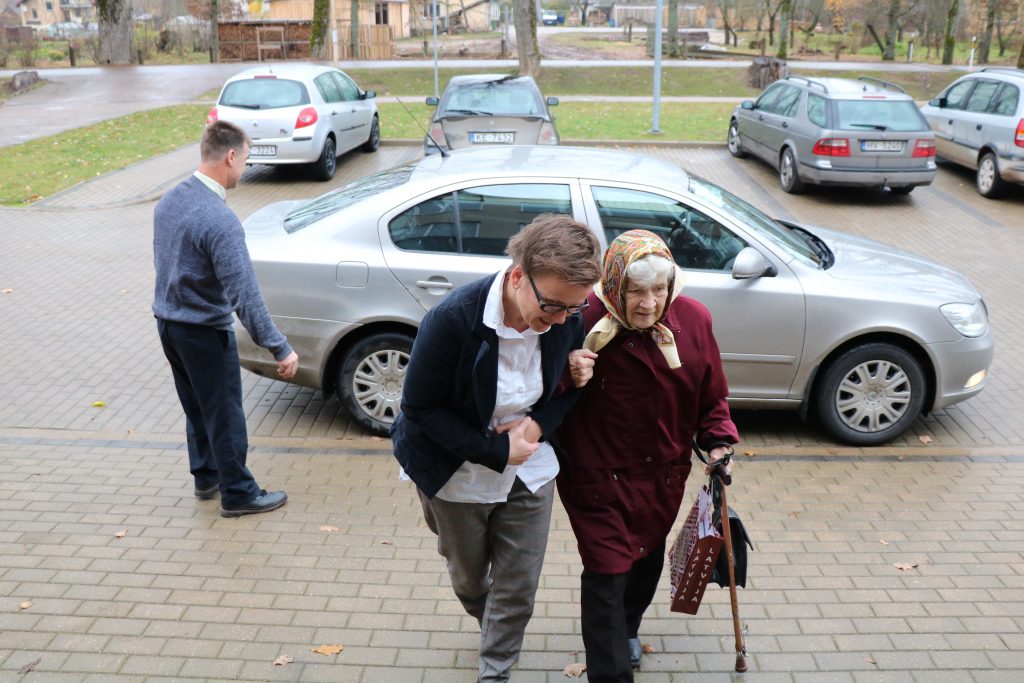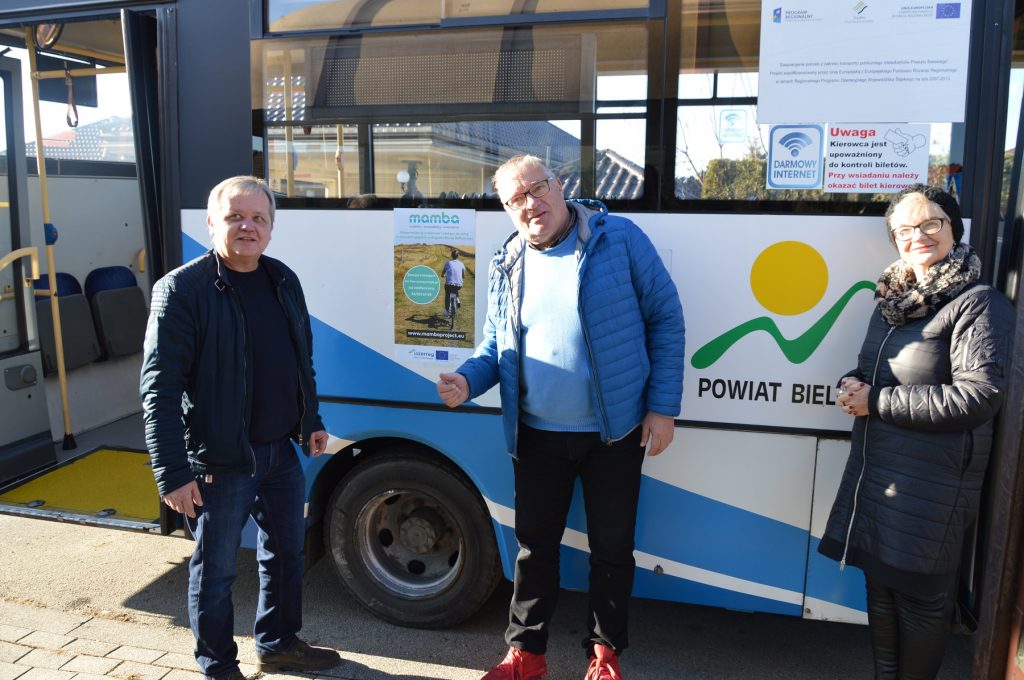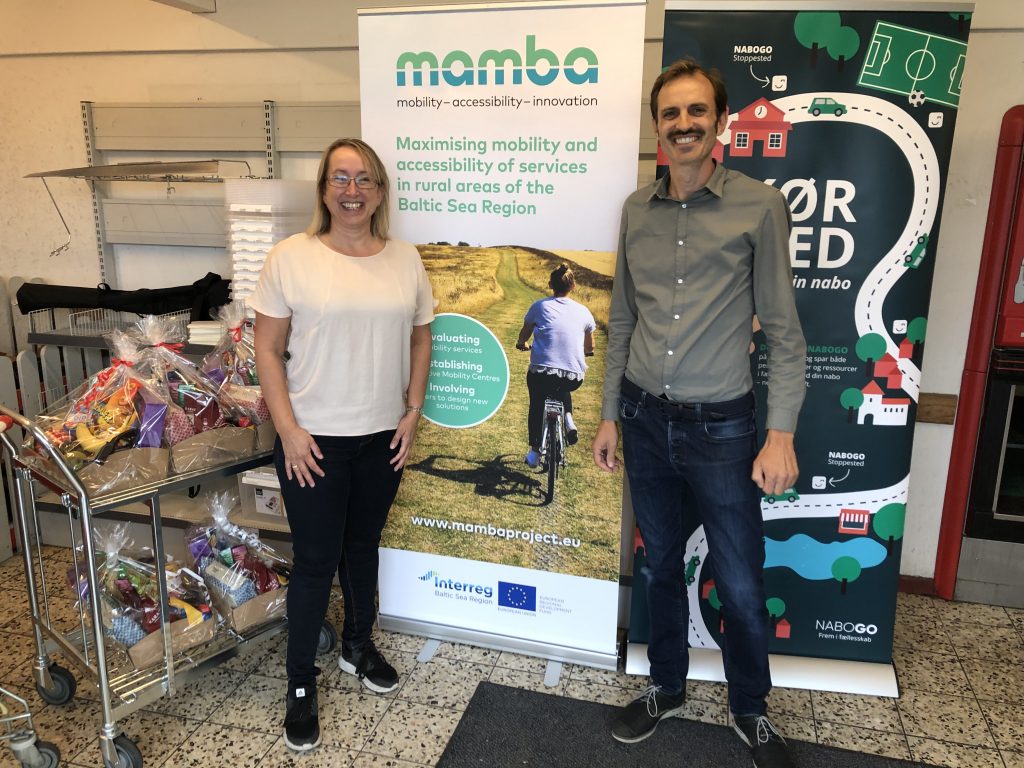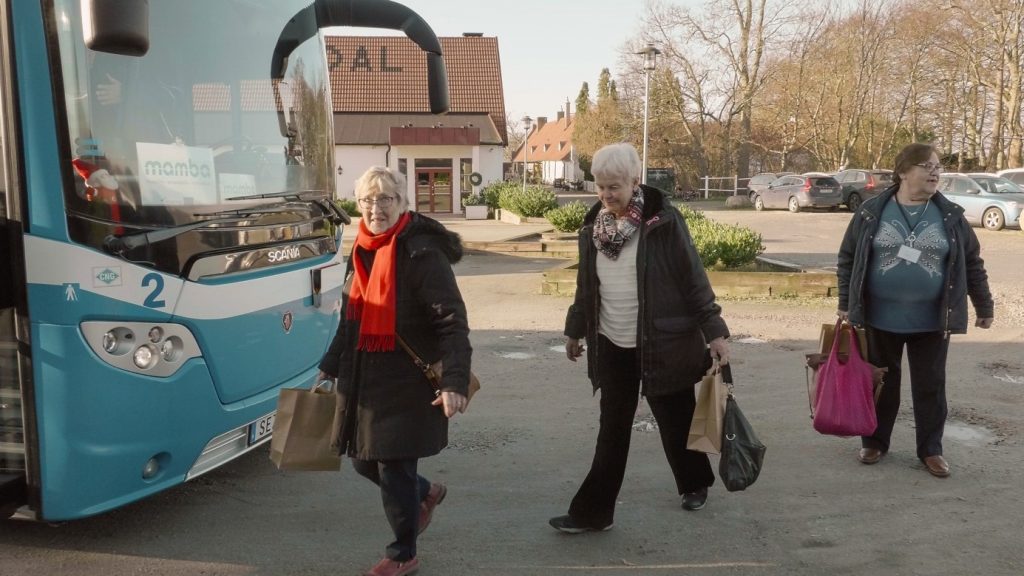“Wherever you live, you should have the same access to services,” says Anita Āboliņa, Project Manager of the MAMBA pilot initiative in Vidzeme Planning Region, Latvia’s largest and most sparsely populated region. Enhancing rural mobility requires flexible solutions that complement the often limited public transport offering. Each solution must be adapted to the local context, taking into account the geography of the area, population density and demographics, and the mobility needs of the local population. The MAMBA project has explored new rural mobility solutions in the Baltic Sea Region.
Classic rural challenges call for new solutions
“Apart from the long distances and low population density, people are moving away from the rural areas and the remaining population is ageing,” says Āboliņa, who is the Vidzeme Planning Region’s Information Manager. “Many of the bus lines that serviced these areas have been cut, so public transport is rare or even non-existent. We therefore wanted to introduce alternative and more flexible mobility options for these areas.”
The nine MAMBA pilot initiatives have assessed the potential of a variety of innovative rural mobility solutions in six countries in the Baltic Sea Region, emphasising sustainability, social inclusion and user involvement. Six of them focus on providing further mobility options for the rural population, moving people-to-service, while three of them look into the possibility of bringing more social services out to the communities, the so-called service-to-people mobility solutions.
After consulting with municipalities and the local population, Vidzeme opted for a transport-on-demand service, offering direct transport to the nearby cities. The service is coordinated through a mobility centre that registers all users and provides automatically generated route planning, based on demand.

“The initiative has substantially improved accessibility to services, such as shops, pharmacies, doctors, state institutions and further public transport,” says Āboliņa. She attributes a large part of the success to user engagement. “From the start, we’ve been committed to engaging local stakeholders and users in developing the service and making sure that it meets their needs. This gave them a strong sense of ownership, which has been very valuable throughout the project.”
Better links to public transport
The MAMBA pilot in the Bielsko District in Poland also implemented a transport-on-demand service, although with a slightly different purpose.
“Our aim was not to bring people directly to the city but to enable them to access public transport,” says Maciej Bereda, Communications Officer at the Bielsko District Office. “Due to lack of public transport options, the population in many of our villages is highly dependent of their private cars. With this new service, passengers are collected directly from their homes and brought to the nearest bus stop or train station, where regular public transport is available.”

The service, which is one of the first of its kind in Poland, was launched in Wilkowice, a small village located eight kilometres south of Bielsko-Biela. Passengers can order transport by phone or via an online platform that was developed during the project.
“The idea of transport-on-demand was actually met with some scepticism from the beginning, but based on the experience from Wilkowice, we now have several communities interested in a similar solution. Our main obstacle is to ensure enough funding to keep the services running, which is something we’re looking into at the moment.”
Locally focused ride-sharing apps
Digital technology is obviously going to play a key role when it comes to expanding the array of rural mobility solutions. During the MAMBA project, Vejle in Denmark teamed up with local mobility start-up NaboGo to develop a new ride sharing app.
“In our search for new solutions, we partnered up with NaboGo to develop a locally focused ride-sharing app,” says project manager Marianne Pedersen. The solution was launched in September 2019, enabling people to organise rides between a small local town, Smidstrup-Skærup, and the surrounding areas, including the nearby cities of Vejle, Kolding, Odense and Fredericia. “Our main interest is to facilitate trips in the local area: people commuting to work, going to school, going shopping or seeking other services.”

All payments are taken care of through the app, based on a fixed rate per kilometre. As NaboGo’s business model is based on service agreements with the municipalities that wish to implement the solution, the full amount goes to the driver. No additional insurance is required for drivers offering rides through NaboGo. Eleven Danish municipalities have already started using the solution and NaboGo is currently in negotiations with partners from all around Europe.
In Denmark, NaboGo is linked to the national journey planner, Rejseplanen, which provides information on all public transport as well as a range of shared-use mobility solutions.
“We’re often asked if we’re doing this to be able to remove the last busses from the rural areas, but that couldn’t be further from the truth. On the contrary, our objective is to provide a good addition to rural mobility and optimise the connections to the public transport network.”
Excursions for the elderly
Compared to most rural areas in Europe, the public transport situation is somewhat atypical in Trelleborg, a town of approximately 50,000 inhabitants in the south of Sweden.
“Trelleborg and the surrounding areas have a well-developed bus network, and when the network doesn’t reach the rural areas, it’s supplemented by on-demand transport services,” says Christoffer Pettersson-Hernestig. He managed the MAMBA pilot in Trelleborg, which looked into the possibilities of better using the municipality’s existing mobility resources.
One of the key objectives of the MAMBA project is to attend to the mobility needs of the elderly. In Trelleborg, they therefore decided to use the municipality’s school buses, which were not being used during evenings and weekends, to organise excursions for elderly people living in rural areas.

“The excursions were an enjoyable new activity and also contributed to the local businesses in the places that we visited,” says Pettersson-Hernestig “Social isolation among older people is a growing public health concern, and we were delighted to see that the bus became a popular meeting place. The Swedish population is ageing, so we must come up with new mobility ideas to support elderly in maintaining an active and meaningful lifestyle.”
Like many others working on implementing innovative mobility solutions, the project ran into challenges regarding public procurement. To continue the service, the municipality would be obliged to outsource the service to a private service provider, which, due to insurance issues, would eliminate most of the benefit of using the municipal school buses for this purpose.
Reducing the need for commuting
In addition to the excursions, the MAMBA project team opened a co-working space together with the local village council in Södra Åby, aiming to reduce the need for mobility.
“The problem with mobility is mobility itself, the need to commute,” says Pettersson-Hernestig. “Back in the day, you could live your entire life in your village, whereas today, most of the work opportunities are in the urban areas. The co-working space offered people the necessary facilities to work from a distance rather than having to commute to Malmö, for instance. This is a good example of the service-to-people solutions that have been implemented as part of the project.”

